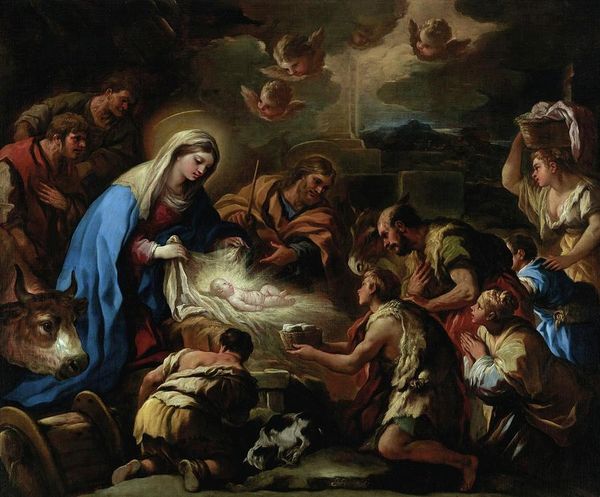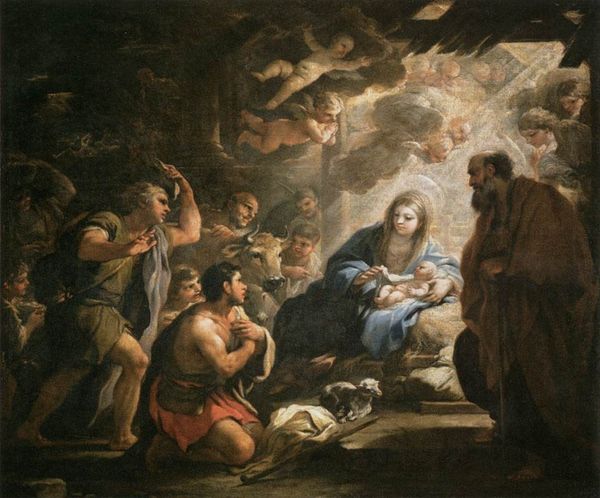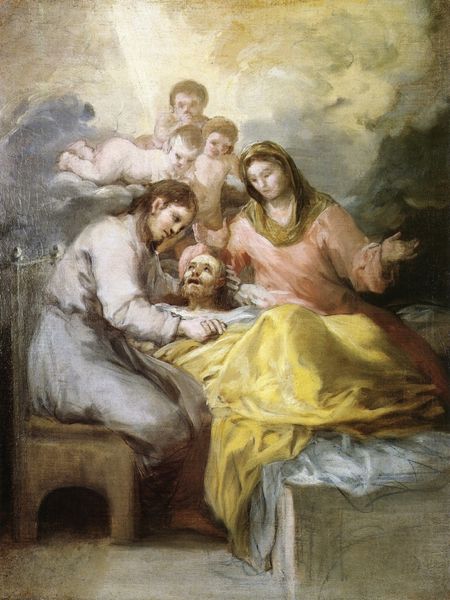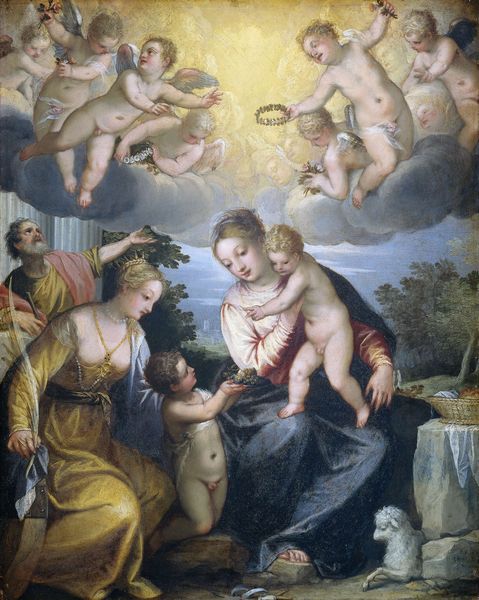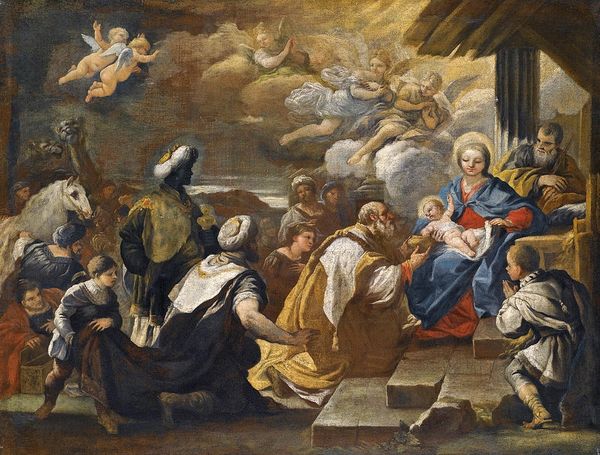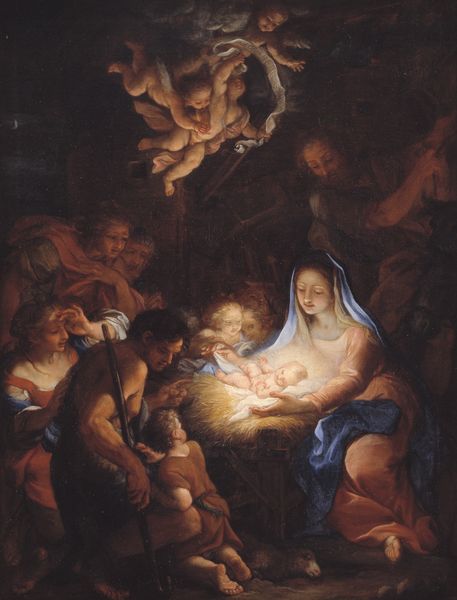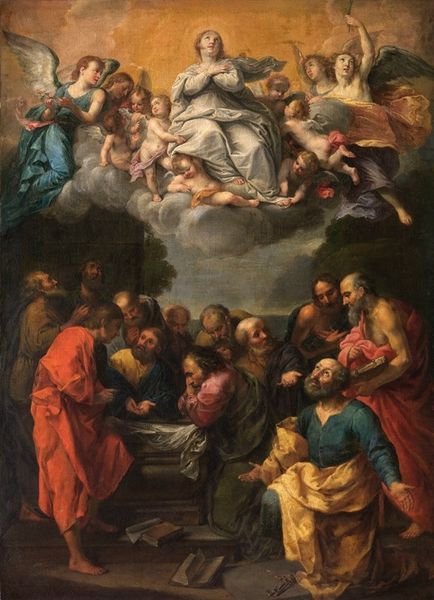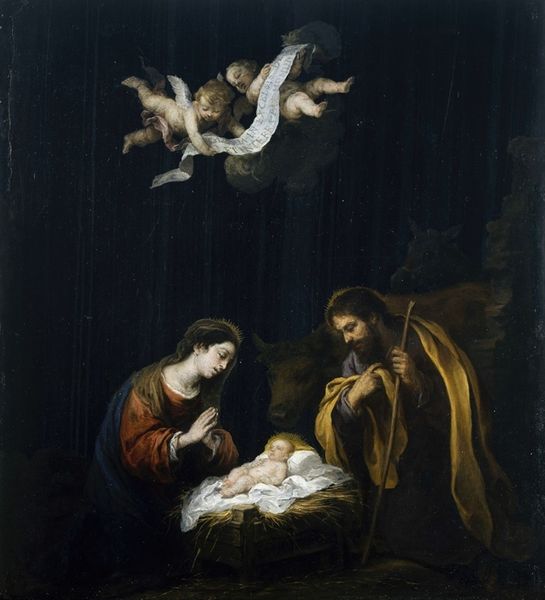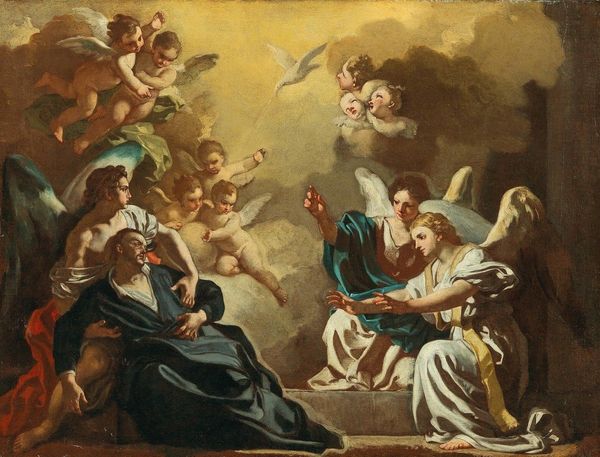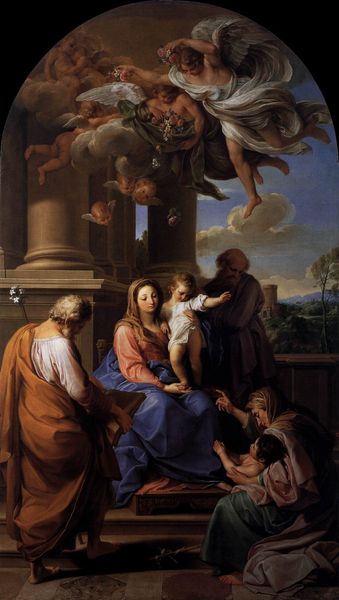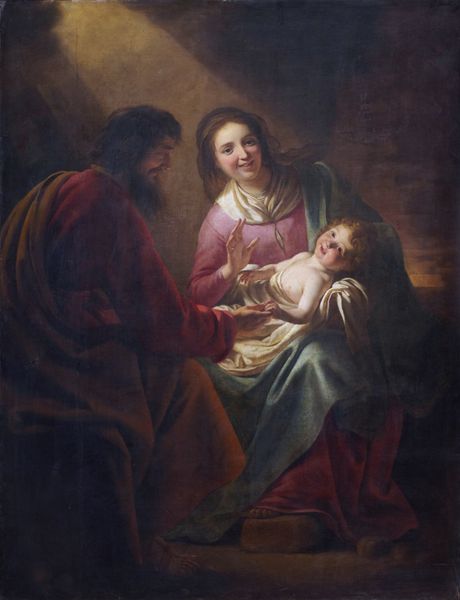
painting, oil-paint
#
portrait
#
allegory
#
baroque
#
painting
#
oil-paint
#
figuration
#
oil painting
#
history-painting
Copyright: Public domain
Curator: I'm struck by the quiet intimacy of this composition. The subtle gradation of light really enhances the spiritual atmosphere. Editor: Indeed. We are looking at Miguel Cabrera’s oil painting, "The Conversion of Saint Ignatius Loyola," which currently resides in the Museo Nacional de Arte in Mexico City. The work captures a key moment in Loyola's spiritual journey. Curator: Notice how Cabrera uses the diagonal arrangement of figures to guide the eye, from the earthly realm of the wounded Loyola in bed to the celestial vision of the Virgin Mary and Christ Child. The cascading drapery adds dynamism to the scene, typical of the Baroque style. Editor: Right, Loyola was recuperating from battle wounds when he experienced a profound religious awakening. This artwork embodies the deep intertwining of the colonial project and evangelization. Look at the figures peering in from the doorway. Who were they? What was the indigenous perspective of Loyola's vision of salvation? Curator: Perhaps the people standing off to the side offer compositional balance, but I understand what you're driving at. What I am looking at is the artist's technique, particularly in rendering textures: the soft linens contrast with the shimmering robes of the Virgin. Editor: Yes, and I look beyond surface appearances to interrogate underlying sociopolitical power structures at play. Loyola founded the Jesuit order, deeply involved with conversion during the colonial period, where religion was often weaponized. We can think about the many people who refused conversion even at their peril. The angel children add a layer of sentimental innocence which somewhat belies the complicated political role the religion plays. Curator: While understanding the context adds depth, let's appreciate the careful distribution of colour—the earthly tones anchored by Loyola's crimson blanket give way to celestial blues and golds, creating a hierarchy of space. Editor: Agreed. And those colors echo and underscore that there is both political history and devotional yearning woven together. I see the artist balancing the elements into a testament to spiritual transformation and political undertones of cultural encounter, with each stroke adding to its profound meaning. Curator: Ultimately, analyzing the composition, color, and interplay of forms allows a deep understanding and appreciation for Miguel Cabrera's artistic achievements. Editor: But it's not simply about artistry; it prompts crucial reflections on the ongoing legacies of colonialism and faith, as they’re painted into every divine intervention.
Comments
No comments
Be the first to comment and join the conversation on the ultimate creative platform.


